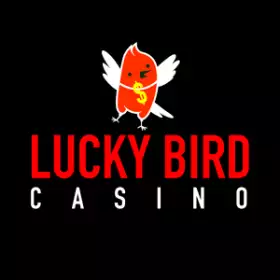_770.webp)
This article introduces users to the most common card counting system in blackjack, known as High-Low. Harvey Dubner is the inventor of the High-Low card counting system. However, Stanford Wong made a significant contribution to its development. It is the simplest of all the existing systems. It cannot be called very efficient. Therefore, it is not used by professional gamblers. In addition, if you are going to use it in the same club for a long time, its employees will quickly get you pegged and ask you to leave the casino.
Nevertheless, the High-Low counting system is perfect for novice players to understand the principles of card counting and increase their chances of winning.
As for the odds of winning, do not think that even with this system mastered, you can increase your bankroll a few times. We are referring to a small percentage of the total amount, which you can collect on a regular basis. So, if you still wish to get acquainted with the High-Low system, let's start.
Principles of High/Low Card Counting
This counting system is based on the fact that each card in the deck gets one of three numerical values: +1, 0, or -1. That is why you may also find its alternative title, the Plus-Minus count.
- Cards from a ten to an ace are worth -1.
- Deuces-sixes bring +1, respectively.
- Other cards are worth 0.
It is easy to calculate that the total sum of fifty-two cards in the deck equals zero.
During the gameplay, you should add the values of cards placed into a discard tray, including those that the dealer cuts.
The more high-ranking cards (tens and face cards) are left in a shoe, the higher this score is.
This increases the probability of a good hand and is ideal for playing according to the basic strategy. In such a case, if the score rises to 5 or more, it makes sense to raise your bet. If your score is negative when a shoe is almost empty, you should rather reduce your bet. If there are a few gamblers at the table, we recommend that you fold until the score reaches at least 0.
For example, Q, 8, A, J, and A are dealt. The total score is -3.
The number of cards that have not yet been dealt should also be taken into consideration. After all, the score of +5 is more valuable when only fifty cards are left after the first deal.
To do this, the concept of "true count" is introduced. Your running count is divided by the number of decks in the shoe. If the resulting number is positive, even in this case, it is the most appropriate time to raise your bet.
It is not difficult to guess that this situation will occur when the shoe is almost empty.
To be sure, we are referring to the basic strategy that follows all the recommendations provided by it. If you meet these rules and vary bets competently, the house advantage in blackjack disappears. Moreover, gamblers can even get an advantage over casinos.
Bankroll Management When Using the Hi-Lo Card Counting Method
Bankroll management is one of the most important aspects of successfully applying the Hi-Lo card counting method in blackjack. Even with a statistical edge, short-term losses are inevitable, and without proper money management, a player can go broke before their advantage pays off.
A typical approach is to divide the bankroll into units and base betting decisions on those units rather than risking large portions at once.
- When the Hi-Lo count is negative or neutral, the player should wager the minimum to protect funds.
- When the count rises and the odds shift in the player’s favor, the bet size should increase gradually but within a disciplined spread.
The goal is to maximize profits during favorable conditions while ensuring that a losing streak cannot wipe out the bankroll.
A properly managed bankroll also provides the psychological stability to stick with the Hi-Lo strategy over the long term, avoiding panic-driven decisions. Without this discipline, even skilled counters can lose their edge due to poor financial control.
Tips on BJ Card Counting
To summarize, we aim to provide examples where card counting is not effective.
- First, this is related to online casinos, where all cards are shuffled before each deal, so it is absolutely useless to count.
- If the dealer cuts more than one-third of the cards while placing them into a shoe, the actual count can rarely be positive.
- It is inefficient if the dealer may blindly discard one or several cards into the discard tray. This is not a widely used rule, but in some clubs, it is employed, especially when a gambler is suspected of card counting.
Keep that in mind.
| Name | Soft | Return to player | ||
|
|
99.78% | |||
|
|
99.71% | |||
|
|
99.7% | |||
|
|
99.69% | |||
|
|
99.65% | |||
|
|
99.6% | |||
|
|
99.59% | |||
|
|
99.54% | |||
|
|
99.54% | |||
|
|
99.54% |
Conclusion
We have provided you with the basic principles of the High-Low card counting system. Keep in mind that most casinos are not glad to see gamblers who have such an approach to the game. So, do not demonstrate your skills.
In further articles on Casinoz, we will discuss this issue to find out how you can give yourself away while counting cards and how to avoid this.








































